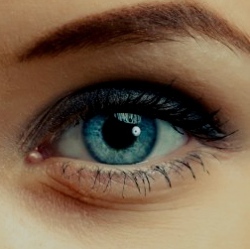
Breakthroughs in technology are bringing to life the futuristic promise of bringing sight to the blind. Of all the senses, sight is one that ensures personal freedom. Several breakthroughs are available to keep this invaluable resource healthy. Technology in ophthalmology is evolving faster than in previous decades with outcomes enhancing an individual’s life.
Diverse advancements are found in procedures, equipment, providers, devices, and pharmaceuticals. This is a look at the five ways they contribute to eye care.
Procedures
Ophthalmologists have a new arsenal to correct vision from conditions such as astigmatism, cataracts, and even blindness. LASIK and PRK use a laser to cut below or on the surface of the cornea. These procedures can now be completed in five minutes with shorter recovery times. Cutting-edge techniques make thin, precise cuts. A special type of stem cell called limbal is used by the body to keep corneas clear. Blindness from damaged corneas has a pioneering procedure that isolates, harvests, and implants these cells on the affected eye. Results allow sufferers to regain their sight.
Equipment
Micro-keratome blades used in LASIK and PRK surgeries have been replaced by the blade-free excimer and femto-second lasers. Cataract surgery uses a 3D femto-laser with a true representation of the actual eye. Analyzers complement these surgeries by employing state-of-the-art Wavescan and Wavefront that details optic nerves and iris measurements. They also have the ability to track pupils to heighten accuracy. Use of this latest equipment translates to better outcomes and ability to return to work the next day.
Devices
IOL (intraocular lens) or corneal inlays are placed in the eyes after cataracts are removed. They allow patients to see without the need for glasses. Several different powers are available to correct common eye conditions including astigmatism. The toric IOL is designed specifically for misshapen eye balls. Multi-focal devices are another option to correct both near and farsightedness with one lens. More advancement waiting for approval in the United States is KAMRA. It is a fine ring placed on the cornea to bolster vision.
Providers
With all the advances in procedures, equipment, and devices, there is innovation with eyeglasses and contact lenses. They include using complex algorithms to measure and create precision eyewear. LifeScape, Zeiss, and Shamir are examples of the ingenuity that helps customize each product. The number of specialty providers is increasing in the industry including companies such as Identity Optical. They have a staff of certified professionals trained in the use of these technologies.
Pharmaceuticals
Diabetic retinopathy and macular degeneration can now be treated with several approved drugs. Physicians inject Eylea into the eyes of diabetic patients once per month. It treats blood vessel leakage in the optic pathways. Chemotherapy drug Avastin and vascular endothelial growth factor or VEGF are treatments used to abate the advancement of macular degeneration. It binds new blood vessels and stops bleeding as well.
Eating healthy and appropriate rest will help with the new technology in eye care. A caveat is regular eye exams will find any problems sooner rather than later.
